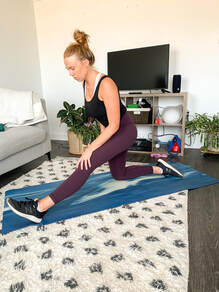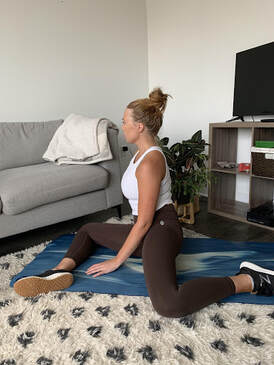|
By Dr. Katie Casto, PT, DPT  This is a highly contested and debated question, one that we don’t have definitive answers to yet. However, research supports that different types of stretching may be more appropriate or effective for you based on your specific goals and your individual situation. Let me explain...  Static Stretching It has been shown over and over again in the literature that static stretching (the type of stretching that most of us think of, which includes holding a muscle in a lengthened position for a longer period of time, usually 30 seconds or greater) reliably increases range of motion. It has also been suggested that holding these stretches at a higher intensity (pushing into more discomfort) results in greater increases in range of motion (Takeuchi 2020). However, static stretching consequently decreases strength for a period of time afterwards and can negatively impact performance. For example, one study demonstrated that stretching the hamstrings (long holds, like we talked about earlier) before performing a triple hop test decreased strength in the hamstrings and significantly decreased performance on the triple hop test. Moreover, this effect holds true in the short term (ie. one bout of static stretching) and for more chronic stretching programs (repeated stretching, ie. several times per week) (Barbosa 2018). What you should know:
If not static stretching, then what? Dynamic stretching may be more appropriate to perform prior to a performance type activity (like participating in a sport). Dynamic stretching includes continuous movements rather than holding one position as in static stretching; it is active rather than passive. Several studies have shown that dynamic stretching not only doesn’t have a detrimental effect on strength like static stretching, but it can actually improve performance (Barbosa 2018). In addition, incorporating dynamic stretching into warm ups prior to physical activity can significantly reduce the risk of injury (Rossler 2017). The active movements that comprise dynamic stretching are thought to increase blood flow to the muscles, increase heart rate, and promote changes to the nervous system that result in the positive effects noted. What you should know:
Keep in mind that neither static nor dynamic stretching is inherently bad or good. Each is beneficial for achieving certain goals, whether it be improving performance or regaining mobility after a surgery. A physical therapist can help you to achieve your specific goals through creating and guiding you through an individualized program of progressive exercise. We can help you to navigate sometimes confusing and complicated topics like this one and are happy to answer any questions you may have on this topic or generally. Let us know if you have any questions! References:
Barbosa GM, Trajano GS, Dantas GAF, Silva BR, Vieira WHB. Chronic Effects of Static and Dynamic Stretching on Hamstrings Eccentric Strength and Functional Performance: A Randomized Controlled Trial. J Strength Cond Res. 2020 Jul;34(7):2031-2039. doi: 10.1519/JSC.0000000000003080. PMID: 30789583. Takeuchi K, Nakamura M. Influence of High Intensity 20-Second Static Stretching on the Flexibility and Strength of Hamstrings. J Sports Sci Med. 2020;19(2):429-435. Published 2020 May 1. Rössler R, Junge A, Bizzini M, Verhagen E, Chomiak J, Aus der Fünten K, Meyer T, Dvorak J, Lichtenstein E, Beaudouin F, Faude O. A Multinational Cluster Randomised Controlled Trial to Assess the Efficacy of '11+ Kids': A Warm-Up Programme to Prevent Injuries in Children's Football. Sports Med. 2018 Jun;48(6):1493-1504. doi: 10.1007/s40279-017-0834-8. PMID: 29273936; PMCID: PMC5948238. Comments are closed.
|
Meet Your TherapistJessica has been in Austin, TX for the past four years. She grew up in Idaho and attended PT school at Idaho State University. She completed an Orthopaedic Residency and became a Board Certified Orthopaedic Clinical Specialist in 2016. Archives
February 2022
Categories
All
|

 RSS Feed
RSS Feed